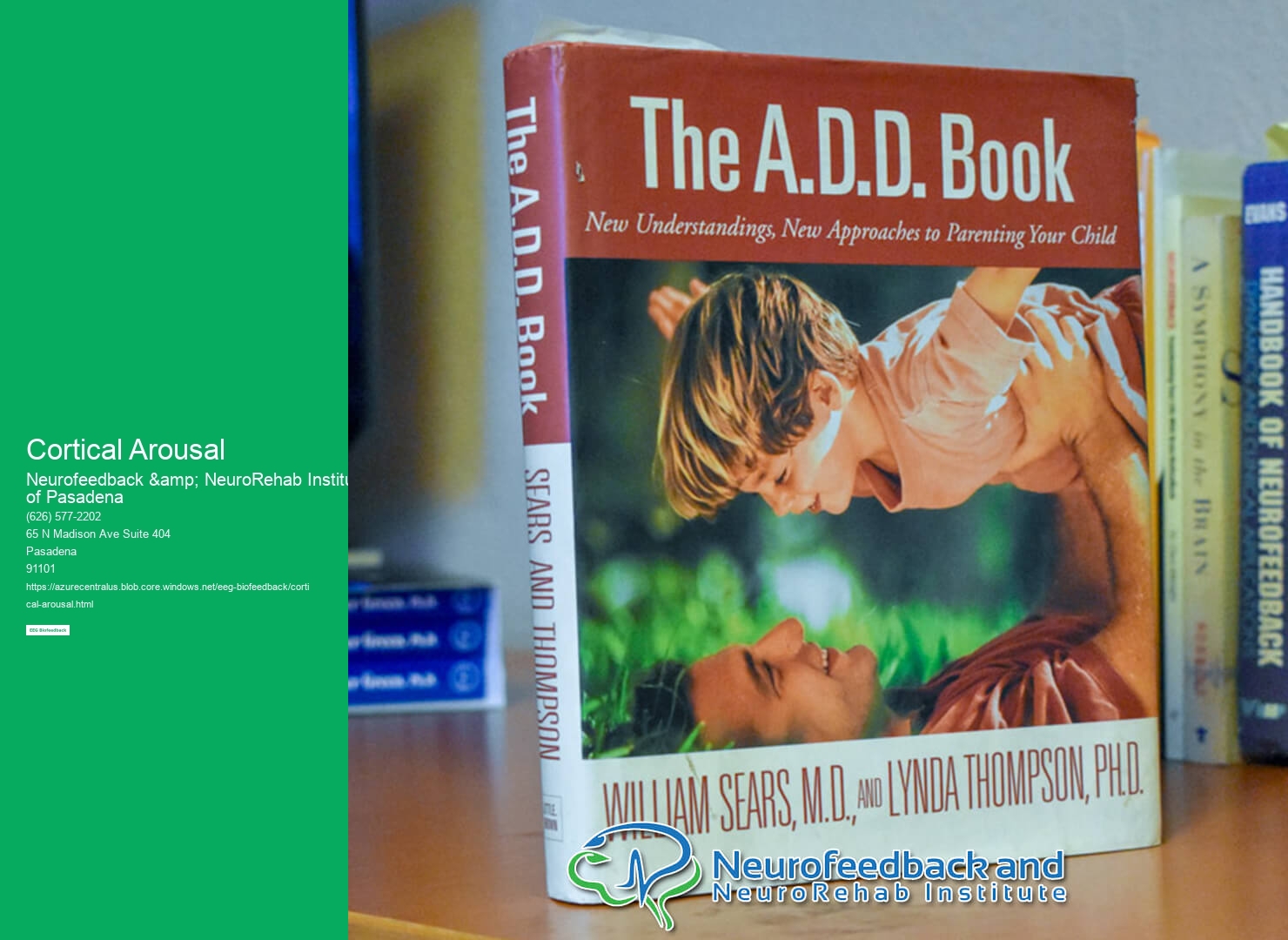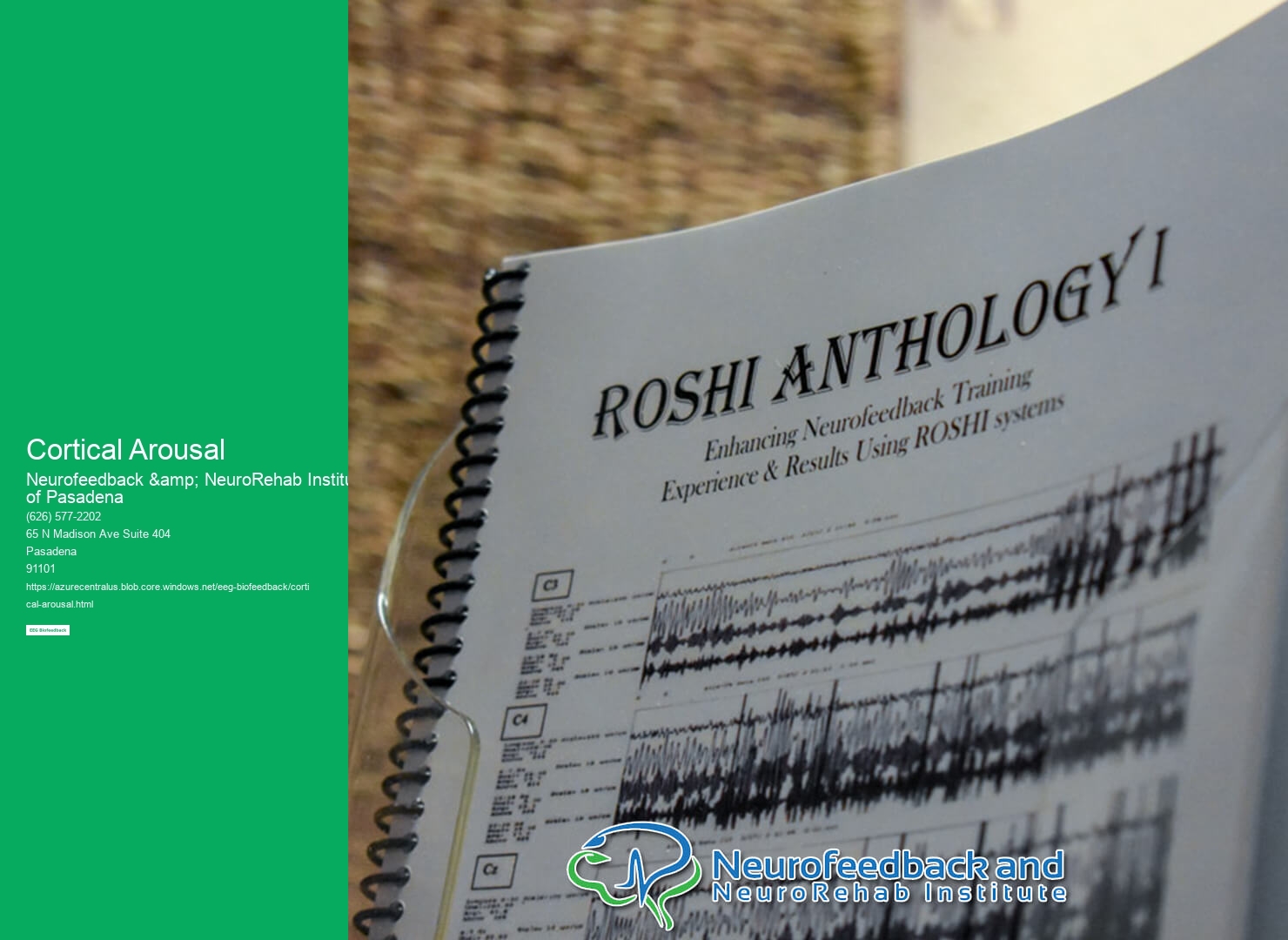

Cortical arousal refers to the level of activation or alertness in the cerebral cortex, which is the outer layer of the brain responsible for higher cognitive functions. It is influenced by the balance between excitatory and inhibitory neurotransmitters in the brain. When cortical arousal is high, there is increased brain activity and a state of heightened alertness. This can lead to improved cognitive performance, such as enhanced attention and faster information processing. On the other hand, low cortical arousal is associated with decreased brain activity and a state of relaxation or drowsiness.
Cortical arousal can be measured using various methods. One commonly used technique is electroencephalography (EEG), which involves placing electrodes on the scalp to detect and record the electrical activity of the brain. EEG can provide information about the frequency and amplitude of brain waves, which can be used to assess cortical arousal levels. Another method is functional magnetic resonance imaging (fMRI), which measures changes in blood flow and oxygenation in the brain to infer neural activity. Other measures of cortical arousal include heart rate variability, skin conductance, and pupil dilation.
Several factors can influence cortical arousal levels. One important factor is the sleep-wake cycle, with cortical arousal typically highest during wakefulness and lowest during sleep. Other factors include environmental stimuli, such as noise or light, which can increase arousal, and relaxation techniques, such as meditation or deep breathing, which can decrease arousal. Additionally, individual differences, such as personality traits or genetic factors, can also play a role in determining cortical arousal levels.

Stress has a significant impact on cortical arousal. When faced with a stressful situation, the brain activates the hypothalamic-pituitary-adrenal (HPA) axis, leading to the release of stress hormones, such as cortisol. This results in increased cortical arousal, preparing the body for a fight-or-flight response. Chronic stress can lead to prolonged activation of the HPA axis, which can have detrimental effects on cortical arousal and overall brain function. Physiological changes associated with stress include increased heart rate, elevated blood pressure, and changes in the pattern of brain waves.
Abnormal cortical arousal has been associated with various disorders and conditions. For example, individuals with attention deficit hyperactivity disorder (ADHD) often exhibit low cortical arousal, leading to difficulties in sustaining attention and regulating impulses. Conversely, individuals with anxiety disorders may have high cortical arousal, leading to excessive worry and hypervigilance. Sleep disorders, such as insomnia or sleep apnea, can also disrupt cortical arousal patterns, leading to difficulties in falling asleep or maintaining sleep.


Cortical arousal plays a crucial role in cognitive processes such as attention, memory, and decision-making. High cortical arousal levels are generally associated with improved attention and faster information processing. This allows individuals to focus on relevant stimuli and filter out distractions. However, excessively high arousal levels can lead to difficulties in maintaining attention and can impair memory encoding and retrieval. On the other hand, low cortical arousal levels can result in decreased alertness and reduced cognitive performance.
There are several strategies and techniques that can be used to regulate and modulate cortical arousal levels. Relaxation techniques, such as deep breathing, progressive muscle relaxation, or mindfulness meditation, can help reduce arousal and promote a state of relaxation. Engaging in physical exercise or activities that promote relaxation, such as listening to calming music or spending time in nature, can also be beneficial. Additionally, maintaining a regular sleep schedule and practicing good sleep hygiene can help regulate cortical arousal levels and promote optimal cognitive functioning.

When considering the potential adverse effects or contraindications of EEG biofeedback, several factors are taken into account. Firstly, the individual's medical history and current health condition are thoroughly assessed to identify any pre-existing conditions or medications that may interact negatively with the treatment. Additionally, the specific type of EEG biofeedback being used is considered, as different protocols may have varying risks and contraindications. The expertise and qualifications of the practitioner administering the treatment are also important, as their knowledge and experience can help minimize any potential adverse effects. Furthermore, the individual's age, cognitive abilities, and ability to comply with the treatment protocol are taken into consideration to ensure that the benefits outweigh any potential risks. Overall, a comprehensive evaluation of the individual's unique circumstances is essential in order to mitigate any potential adverse effects or contraindications of EEG biofeedback.
EEG coherence is measured and interpreted in biofeedback sessions using specialized equipment and software. During a biofeedback session, electrodes are placed on the scalp to measure the electrical activity of the brain. The EEG coherence is then calculated by analyzing the synchronization of brain waves between different electrode sites. This measurement provides information about the connectivity and communication between different brain regions. High coherence values indicate strong synchronization and efficient communication, while low coherence values suggest weaker connectivity. In biofeedback sessions, the interpretation of EEG coherence involves comparing the individual's coherence values to normative data or baseline measurements. This allows the practitioner to identify areas of the brain that may be overactive or underactive and guide the individual in regulating their brain activity through various techniques and exercises. By training individuals to increase or decrease coherence in specific brain regions, biofeedback sessions aim to improve overall brain function and promote optimal mental and emotional well-being.
EEG biofeedback, also known as neurofeedback, plays a crucial role in enhancing neuroplasticity. By providing real-time information about brain activity, EEG biofeedback allows individuals to gain awareness and control over their brainwaves. This process involves the use of specialized equipment to measure electrical activity in the brain and provide feedback to the individual. Through repeated sessions of EEG biofeedback, individuals can learn to regulate their brainwaves and optimize their brain function. This enhanced control over brain activity leads to increased neuroplasticity, which is the brain's ability to reorganize and form new connections. Neuroplasticity is essential for learning, memory, and overall cognitive function. By promoting neuroplasticity, EEG biofeedback can help individuals improve their cognitive abilities, enhance their learning capacity, and recover from brain injuries or neurological disorders.
EEG biofeedback, also known as neurofeedback, has been found to be a suitable intervention for children with attention-related issues. This non-invasive technique uses sensors to monitor brainwave activity and provides real-time feedback to help individuals learn to self-regulate their brain activity. Research has shown that EEG biofeedback can be effective in improving attention, focus, and impulse control in children with attention deficit hyperactivity disorder (ADHD) and other attention-related disorders. By training the brain to produce more desirable brainwave patterns, children can develop better self-control and attention skills. Additionally, EEG biofeedback has been found to have long-lasting effects, with improvements in attention and behavior being sustained even after the treatment is completed. Overall, EEG biofeedback offers a promising approach for addressing attention-related issues in children.
The concept of neural oscillation is extensively applied in EEG biofeedback research. Neural oscillations refer to the rhythmic electrical activity generated by the synchronized firing of neurons in the brain. EEG biofeedback, also known as neurofeedback, is a technique that aims to train individuals to self-regulate their brain activity. In this context, neural oscillations serve as a valuable measure of brain function and can be targeted for training purposes. Researchers use EEG to record and analyze the oscillatory patterns in different frequency bands, such as alpha, beta, theta, and delta waves. By providing real-time feedback to individuals about their brain activity, EEG biofeedback allows them to learn how to modulate their neural oscillations and achieve desired states of brain functioning. This approach has been applied in various domains, including the treatment of attention deficit hyperactivity disorder (ADHD), anxiety, and other neurological conditions.
Incorporating EEG biofeedback into cognitive training programs can offer a range of potential benefits. EEG biofeedback, also known as neurofeedback, is a non-invasive technique that measures and provides real-time feedback on brainwave activity. By incorporating this technology into cognitive training programs, individuals can gain a deeper understanding of their brain functioning and learn to regulate their brainwaves more effectively. This can lead to improvements in attention, focus, memory, and overall cognitive performance. Additionally, EEG biofeedback can help individuals manage stress and anxiety, as it provides them with the tools to self-regulate their brain activity and achieve a state of relaxation. Furthermore, EEG biofeedback can be particularly beneficial for individuals with neurodevelopmental disorders, such as ADHD or autism, as it can help them improve their attention and self-control. Overall, incorporating EEG biofeedback into cognitive training programs has the potential to enhance cognitive abilities and promote overall well-being.
Peak alpha frequency assessment is a valuable tool utilized in personalized EEG biofeedback programs to optimize brainwave activity. This assessment involves measuring the frequency at which the alpha waves, specifically the peak frequency, are most prominent in an individual's brainwave patterns. By identifying the peak alpha frequency, practitioners can tailor the biofeedback program to target and enhance this specific frequency range. This personalized approach allows for more effective training and regulation of alpha waves, which are associated with relaxation, focus, and overall cognitive functioning. Through the use of specialized equipment and analysis techniques, peak alpha frequency assessment provides valuable insights into an individual's brainwave activity, enabling practitioners to design targeted biofeedback protocols that address specific cognitive and emotional needs.